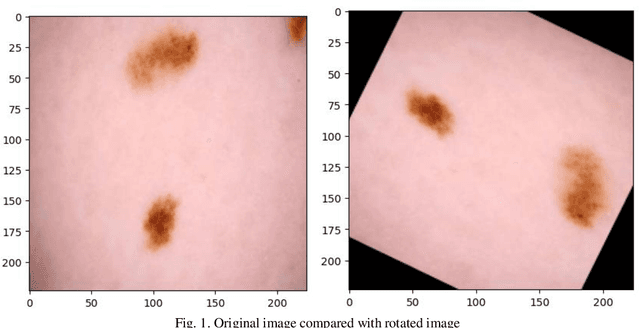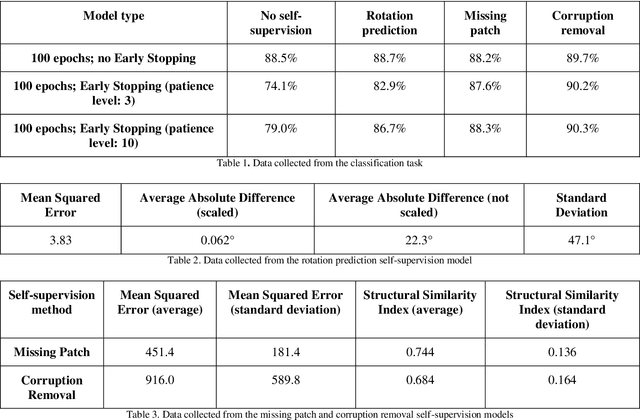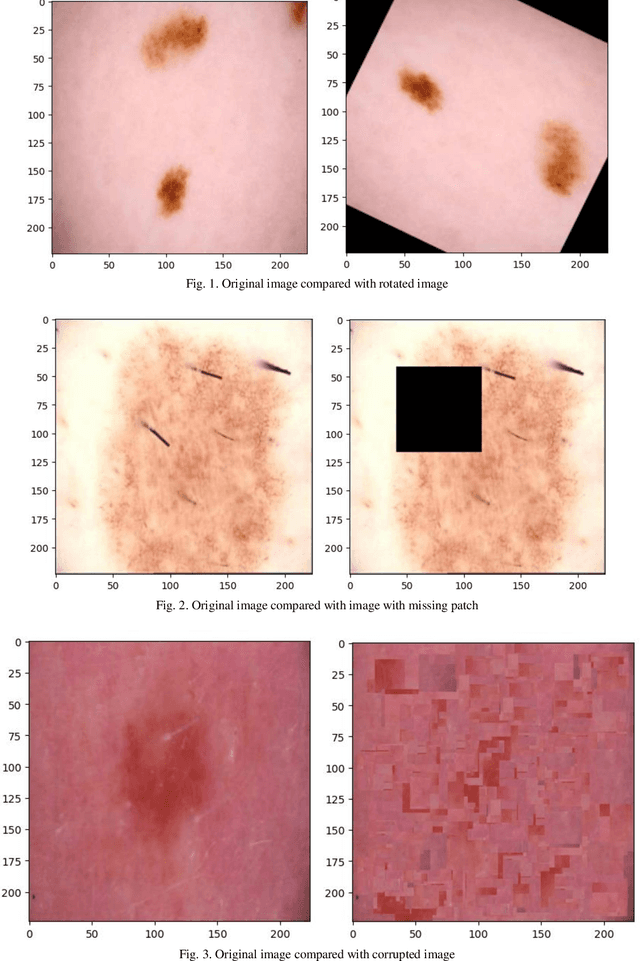Advancing Melanoma Diagnosis with Self-Supervised Neural Networks: Evaluating the Effectiveness of Different Techniques
Paper and Code
Jul 19, 2024


We investigate the potential of self-supervision in improving the accuracy of deep learning models trained to classify melanoma patches. Various self-supervision techniques such as rotation prediction, missing patch prediction, and corruption removal were implemented and assessed for their impact on the convolutional neural network's performance. Preliminary results suggest a positive influence of self-supervision methods on the model's accuracy. The study notably demonstrates the efficacy of the corruption removal method in enhancing model performance. Despite observable improvements, we conclude that the self-supervised models have considerable potential for further enhancement, achievable through training over more epochs or expanding the dataset. We suggest exploring other self-supervision methods like Bootstrap Your Own Latent (BYOL) and contrastive learning in future research, emphasizing the cost-benefit trade-off due to their resource-intensive nature. The findings underline the promise of self-supervision in augmenting melanoma detection capabilities of deep learning models.
 Add to Chrome
Add to Chrome Add to Firefox
Add to Firefox Add to Edge
Add to Edge